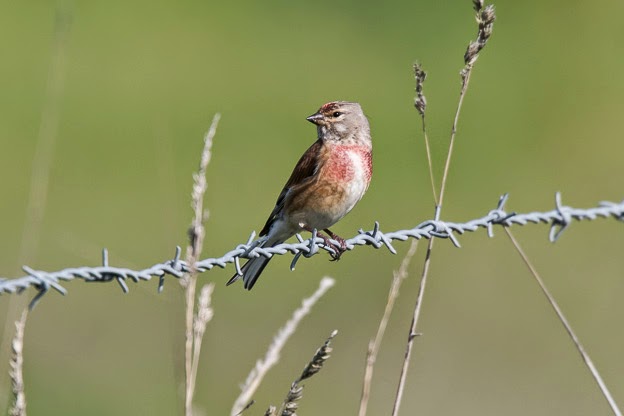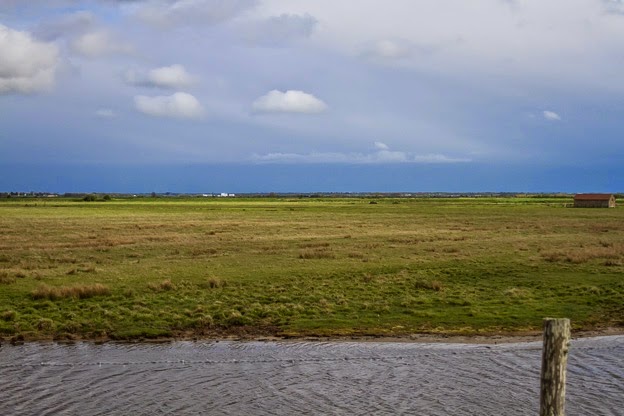The Water Vole above for example only showed itself after I had been standing by a ditch for several hours. I was not actually expecting it, I was just watching out for anything that might come by and my eyes were on the sky rather than the ground. Once it did appear, it then came out about every twenty minutes to graze. After a few minutes it would then gather a mouthful of greenery and run back to the ditch where it presumably had its burrow. This pic catches it on the homeward run, mouth full. Here is another water vole that was just sitting quietly in a different ditch later in the trip.
Whilst we're talking of waterside mammals, you can't go anywhere in Northern France without coming across Coypu, or Ragondin as they are called in French. Pretty amazing beasts, and big compared to a Water Vole.
This Coot seems to be interested as this one passes by. This shot helps show their size.
They are very happy in the water, like Otters, but unlike them Coypu are entirely vegetarian. No one I spoke to was very pleased about their presence on the waterways. They make large burrow networks in the banks and seriously damage them. They did occur in Norfolk in the 1980s I believe, but they were eradicated to avoid just this unwanted outcome. I think the French probably wish that they had done the same. Originally they are escapees from fur farms.
Of course, much of the wildlife in France is the same as here in the UK. This is a Linnet posing on a roadside wire.
And here a Wheatear, freshly arrived from Africa. Interesting colour combination in this photo with the red rocks and the yellow lichen.
Below is a Sedge Warbler in full song.
And here a Meadow Pipit, again using the barbed wire as a perch.
Below is a somewhat distant Roe Deer, complete with antlers.
Of course, one of the delights of a foreign trip is seeing those species that are relatively rare here. The landscape of the marsh lands of the Cherbourg peninsula is flat, and I mean flat!
As are the coastal marshes at the major river estuaries.
You can come across a Marsh Harrier or a Montagu's Harrier almost anywhere. Trouble is, they range very widely and it is a matter of pure chance whether you will see one. I saw two Montagu's on my trip and a few more Marsh Harriers - no decent photos though!
At the end of April all these fabulous locations were pretty devoid of wildlife. The main reason would be the departure of the over-wintering wildfowl. But, as I said at the beginning, with enough patience there is still plenty to see. Like these seals that I gradually crept up on at Le Grand Vey. I think I could have got closer, but unfortunately two other people came along and, although they were being considerate, it some how put me off. I left with the photos that I had managed to get and the seals, although watchful, were not disturbed. Sadly, after I had retreated, one of the remaining people eventually caused the seal below to plunge into the water in alarm.
They don't look comfortable to me, but I suppose they must be.
These passing Spoonbill were another unusual sight for an Englishman abroad! Unfortunately the light was very dim.
Whereas this pic of a Coot feeding its youngster a disgusting mouthful of slime could have been taken anywhere.
On the final day I visited a succession of coastal reserves only to find them largely deserted. I was losing hope when, at the Gatteville Lighthouse I spotted Gannets passing out at sea. Their trajectory seemed to bring them close to the rocky point at times so I set off on a long journey out over the rocks till I could go no further and sat and waited. It was worth it.
I also saw this distant party of Shag skimming along the sea surface.
So, that is about it for my Normandy trip.
Please do share this Blog, or +1 it.
I also have a website www.johncrabb.co.uk where you can see my photos somewhat enlarged, and a Facebook page www.facebook.com/JohnCrabbWildlifeImages which you could visit and "Like" - if you do that is!




























No comments:
Post a Comment